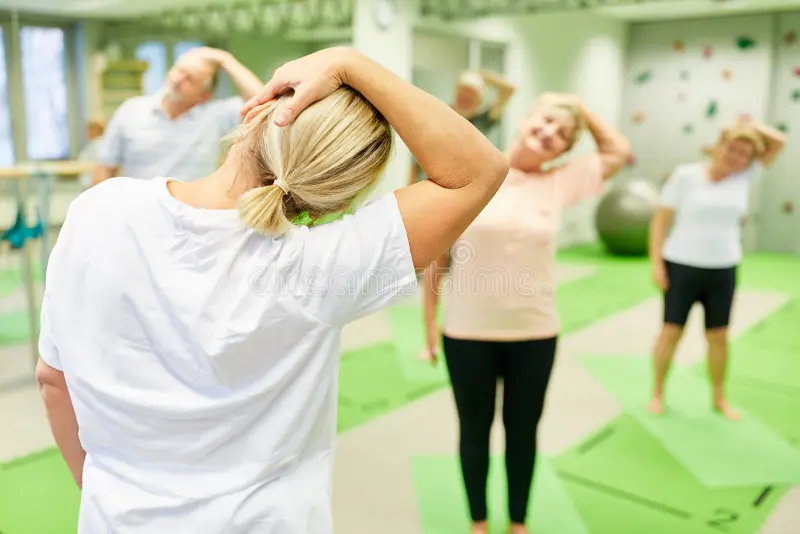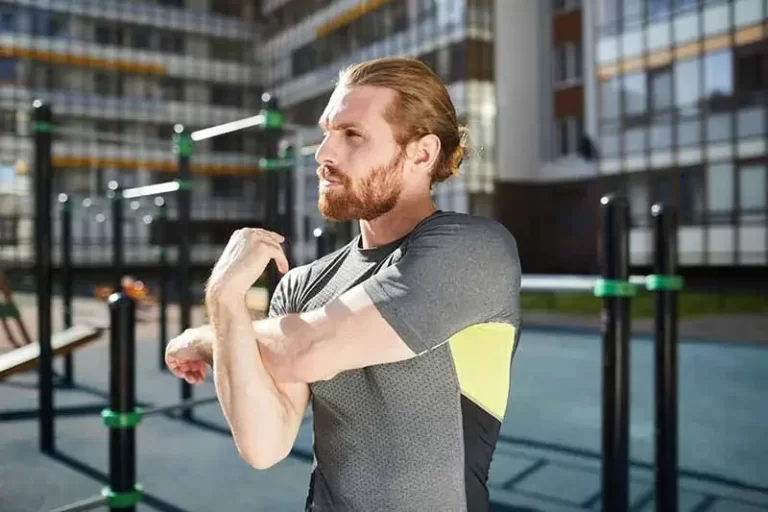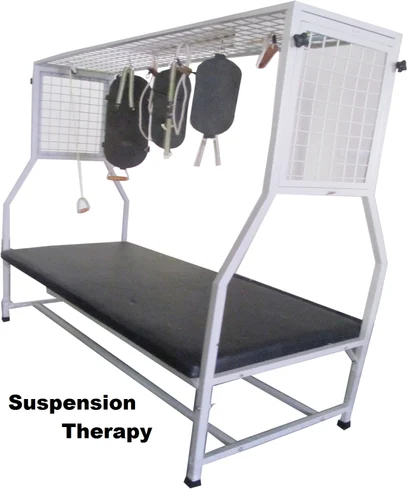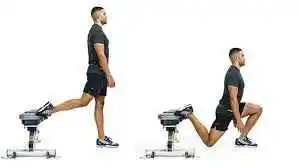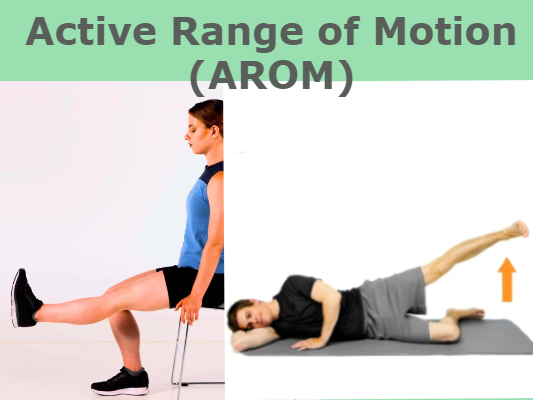Cervical Spine Stabilization Exercises
Introduction
Everyday activities like tilting your head or sitting at a computer might become painful due to neck pain and stiffness. Effective rehabilitation is crucial for pain management and mobility restoration, regardless of the cause—poor posture, trauma, or long-term disorders, including cervical spondylosis and cervical spine arthritis.
Cervical spine physical therapy is a tried-and-true method that uses manual treatment, posture training, and specific cervical spine physical therapy exercises to encourage recovery and avoid further problems.
This manual will provide you with a thorough understanding of cervical spine physical therapy, covering exercises, rehabilitation methods, and lifestyle changes that promote long-term neck health. This post will help you learn about the best alternatives for treating chronic neck pain, whether you’ve been looking for “cervical spine physical therapy near me” or how to get rid of it.
Understanding Cervical Spine Rehabilitation
To preserve neck mobility, lessen pain, and avoid long-term consequences, proper cervical spine rehabilitation is crucial. Exercises for cervical spine physical therapy are intended to enhance posture, neck strength, and spinal health in general.
These exercises can help relieve pain and stiffness related to a variety of neck disorders, increase range of motion, and strengthen supporting muscles. Understanding the relationship between the cervical vertebrae, muscles, and nerves can help people take proactive measures toward rehabilitation. In this part, the basics of cervical spine rehabilitation are examined, including anatomy, typical disorders, and the role that therapy plays in regaining comfort and function.
Overview of the Cervical Spine Anatomy
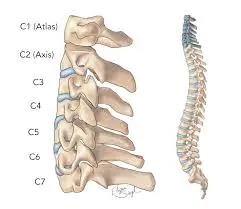
The cervical spine (the portion of the spine that is found in the neck) is composed of seven vertebrae, which are commonly referred to as C1 through C7. The head can move in many different ways because of these vertebrae, which also give the head structural support. These vertebrae store the cervical spinal neurons, which regulate sensations and movement in the upper body, and protect the spinal cord. Intervertebral discs cushion the vertebrae, absorb shock, and keep the discs from rubbing against one another, while facet joints allow for smooth, controlled mobility.
The synovial fluid in the joints increases mobility, while the cervical paraspinal muscles that support the neck maintain stability and good posture. Inadequate physical therapy and rehabilitation exercises can lead to pain, stiffness, and nerve-related symptoms that limit movement, interfere with daily activities, and cause chronic pain when these structures are damaged by conditions such as cervical spondylosis, spinal stenosis, or vertebral fractures.
Common Conditions Affecting the Cervical Spine
Numerous disorders that affect the cervical spine can result in pain, limited mobility, and nerve dysfunction. Cervical radiculopathy, which results from compression of the nerve roots and causes radiating pain, numbness, or weakness in the arms, is one prevalent problem. The cervical spinal nerves are frequently compressed by bone spurs or ruptured discs, causing this disease. Another common ailment that affects the facet joints and discs and causes stiffness, pain, and decreased mobility is cervical spondylosis, a degenerative disease.
Whiplash, which is usually caused by abrupt, violent neck motions like those that occur in auto accidents, is another serious issue. Inadequate rehabilitation results in persistent neck pain, ligament degeneration, and muscular strain. Shoulder or arm pain, tingling, and weakness might be caused by spinal stenosis, a narrowing of the spinal canal that compresses the spinal nerve roots. Physical therapy for the cervical spine and a correct diagnosis are necessary to treat these illnesses, restore function, and prevent further problems.
Symptoms and Signs That Show PT Is Needed
Chronic pain and long-term mobility limitations can be avoided by identifying the early warning signals of cervical spine problems. Rehabilitation for Neck Pain When you have chronic neck aches, stiffness, trouble rotating your head, or radiating pain, numbness, or weakness in your arms or hands, you may need cervical spine (neck) physical therapy. A variety of problems, such as nerve compression, muscular strain, or even more serious conditions needing expert care, can be indicated by these symptoms.
- Neck pain or stiffness that persists even when you’re at rest.
- Inability to rotate your head or neck, which suggests muscle imbalances and a decreased range of motion.
- Numbness or tingling in the arm and hand are common symptoms of cervical radiculopathy, sometimes known as a “pinched nerve” in the neck, which can really be caused by a compressed nerve root. A herniated disc or bone spurs pressing into the nerve space are two possible causes of this compression.
- Muscle tightness or bad posture are frequently associated with frequent headaches that originate from neck stress.
- Compression of the C6 or C7 nerve roots may be indicated by shoulder weakness that impairs grip strength or coordination, necessitating specific rehabilitation exercises.
Cervical Stabilization Exercises: What Are They?
The basic neck-strengthening exercises that many people learn during their workouts are not the same as cervical stability exercises. Simple neck-strengthening exercises performed in the gym might not help with neck control, and they may potentially worsen existing neck pain if done improperly.
The goal of cervical stabilization exercises, a form of physical therapy, is to strengthen the deep neck muscles in order to improve posture, lessen pain, and increase the neck’s stability. By strengthening the deep neck muscles, these exercises help improve the control of movement in the neck and shoulders and lessen the need for stronger, superficial muscles that can become hyperactive.
What is the process of neck stabilization?
Exercises for cervical stability can aid in the recovery of neck injuries and bad habits, restoring your muscles to their vital functions. You can restore control of your neck by learning how to use particular muscles through a cervical stabilization program.
The procedure known as neck stabilization, or cervical stabilization, is used to alleviate neck spinal instability that is frequently caused by illness, injury, or degeneration. Through either non-surgical or surgical methods, the procedure seeks to stabilize the cervical spine in order to stop additional harm and encourage healing.
Exercises For Cervical Spine Stabilization
Chin tuck
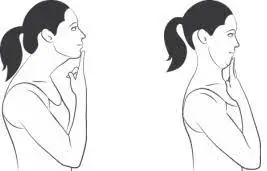
Chin tucks are a great way to improve posture, especially to counterbalance forward head posture, which can cause neck pain and other problems. In order to enhance neck alignment and lessen pressure on the neck and upper back, chin tucks can assist in strengthening the deep neck flexor muscles.
You can execute chin tucks while sitting or standing. For beginners, this is a basic method for performing chin tucks:
- Put your finger on your chin.
- A neck retraction exercise, or chin tuck. It’s a popular workout that strengthens and stretches the neck muscles to help with posture and neck problems. It helps to improve the alignment of the head and neck by targeting the deep neck flexors by drawing the head straight back without tilting the head or bringing the chin forward.
- If you can, hold for 5 seconds.
At first, using the finger as a reference point can be helpful. Using a hand underneath the tucked chin to provide resistance and apply light downward pressure to the hand while holding the position for five seconds is a version of the chin tuck that focuses more on strengthening the deep neck flexor muscles.
Isometric Neck Flexion
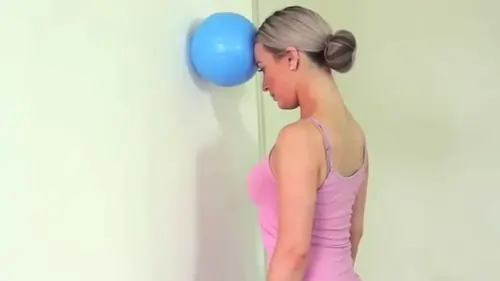
The muscles at the front of the neck are strengthened by isometric neck flexion exercises, which also serve to improve posture alignment and lower the risk of neck pain and injuries. Additionally, these exercises help improve the stability and support of the neck for everyday tasks.
How to Do It:
- Take a straight seat or stand up.
- Touch your forehead with your hand.
- Press your head gently on your palm while using your hand to prevent the movement.
- Keep the strain high for five to ten seconds.
- Let go and do it three to five times.
Isometric Neck Extension
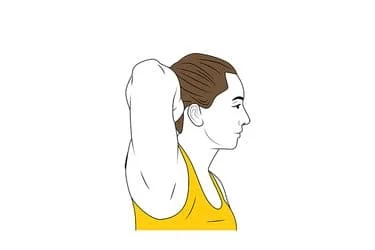
Exercises for isometric neck extension focus on the muscles behind the neck. The neck extensors are strengthened, tension headaches are lessened, and forward head posture is countered. You can also use a resistance band or lie face down to do this isometric neck workout.
How to Do It:
- Take a straight seat or stand up.
- Touch your head with your hands.
- Squeeze your head back into your hands while using your hands to provide resistance.
- Keep the strain high for five to ten seconds.
- Let go and do it three to five times.
Lateral Neck Isometrics
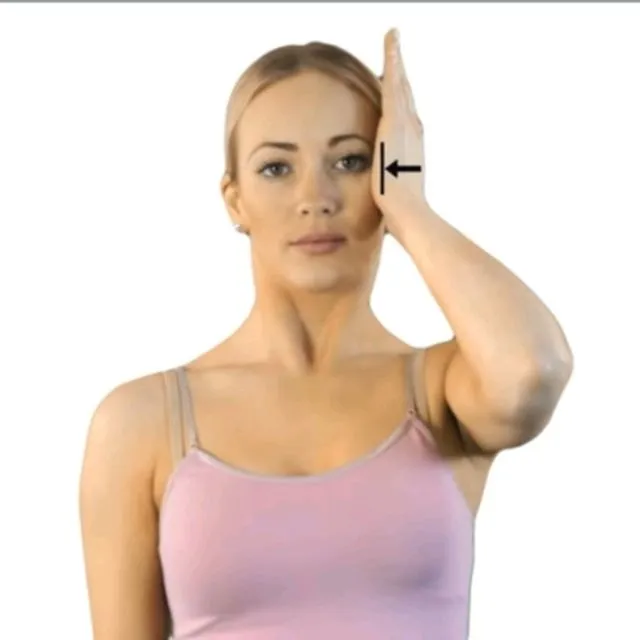
The muscles on the sides of the neck are strengthened by these neck isometrics, which also improve neck mobility and encourage balanced neck muscular growth. For resolving imbalances and eliminating neck stiffness, this exercise is especially helpful after performing the best stretch exercises. You can do this exercise while lying on your side for more resistance, or you can use a resistance band.
Steps to Take:
- Take a seat or straighten up.
- To execute the move, put your right hand against your right side and extend your right arm out to your right side.
- To counteract the movement, press your head sideways on your hand.
- Do the same on the other side.
- Each side performs three to five sets.
Isometric Neck Rotation

The neck rotator muscles are strengthened and made more flexible with isometric neck rotation workouts. The exercise can be done on your back with your head turned against a surface, or it can be done with a resistance band for extra resistance.
How to Do It:
- Put your right hand on your right side.
- Use your hand to resist as you rotate your head to the right.
- Keep the strain high for five to ten seconds.
- On the left side, repeat.
- Work on each side for three to five sets.
Wall Lean Neck Strengthening
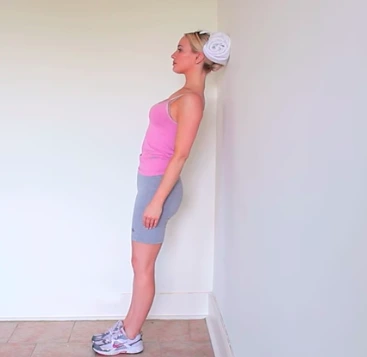
To increase total neck strength and endurance, these exercises work several neck muscles at once. Additionally, they aid in bettering neck stability and posture, which lessens neck pain and makes daily tasks easier. You can also press your forehead against the wall or tilt your head to the sides for a fresh way to use your muscles.
How to Do It:
- Place your back to a wall and stand.
- Standing upright with your back of your head on the wall and your heels, buttocks, and shoulder blades touching the floor will help you maintain proper posture.
- Tense your neck muscles by pressing your head against the wall.
- Keep the strain high for five to ten seconds.
- Let go and do it three to five times.
4 Point Kneel
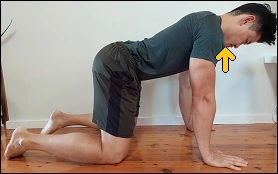
Instruction
- Take a four-point kneeling stance.
- Measure the space between your hands on the ground.
- Then tilt your shoulders back.
- Maintain a fully relaxed posture.
- Put your chin up against your chest.
- Gently pull back your chin.
- Feel for the Deep Neck Flexors to be activated.
- Maintain this posture for five seconds.
- Ten times over, repeat.
Prone Head Lift
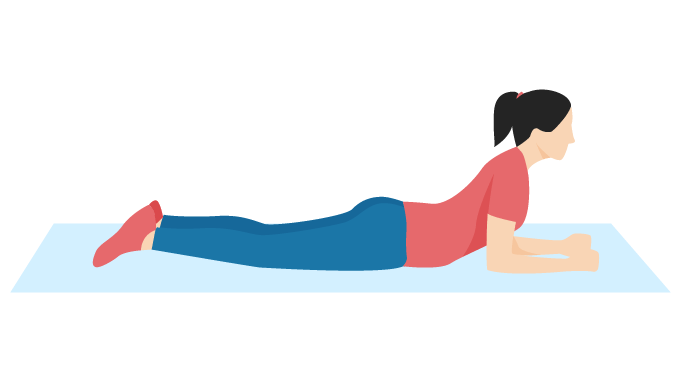
Instruction
- Place yourself on your stomach.
- Your chin should be bent toward your upper chest.
- (The strain on your muscles is increased since you are rotating your head against gravity.)
- Keep your chin tucked in gently.
- The Deep Neck Flexors and the muscles in the back of the neck should be felt working.
- Hold for five seconds, ideally.
- Ten times over, repeat.
Conclusion
You can effectively treat and avoid neck pain while enhancing the general health of your spine by combining cervical spine physical therapy exercises, ergonomic modifications, and functional training. By maintaining a neutral spine and strengthening the cervical paraspinal muscles, proper posture and posture training can further improve rehabilitation and reduce the risk of additional injuries.
Long-term neck stability can be maintained, and therapeutic effects can be reinforced by using a planned at-home workout regimen. Consider speaking with a cervical spine physical therapy specialist in your area if your pain is ongoing, so you can get professional advice and a customized treatment plan.
FAQs
When Is Physical Therapy for the Cervical Spine Required?
It’s critical to know when to seek cervical spine physical therapy to avoid persistent pain and long-term mobility problems. Stiffness, nerve-related symptoms, and neck pain can all be signs of underlying disorders that need medical attention. This section will go over how physical therapy can help with rehabilitation from injuries and chronic diseases, as well as the main indicators that point to the necessity for cervical spine exercises.
How can your cervical spine be stabilized?
A variety of techniques, including non-surgical and surgical treatments, can be used to stabilize the cervical spine, depending on the type and extent of the injury. Backboards, stiff cervical collars, and occasionally traction are non-surgical treatments. More severe examples of instability or nerve compression may be treated with surgery, such as spinal fusion or artificial discs. Rotate your palms wide and hold them there while you squeeze your shoulder blades down and together. The cervical spine’s stability is significantly influenced by the neck flexors. The deep flexors will be strengthened by these workouts, which will enhance posture and lessen spinal strain, which will lessen headaches and neck pain.
How does one go about stabilizing the cervical spine?
Maintaining proper posture, strengthening the muscles in the neck, and sometimes providing external support are some of the methods used to stabilize the cervical spine, or neck. In trauma situations, immediate stabilization is essential, and this is frequently accomplished using a tight neck collar to limit movement. Your physician will remove the troublesome disk and any other bone spurs that may be present during this treatment.
Which techniques are used to stabilize the spine?
To stabilize your spine, various surgical techniques are employed. Your surgeon will fuse the backbones using hardware like spinous process plates, facet screws, and percutaneous pedicle screws.
What is the most effective workout for neck pain?
For cervical pain, mild neck stretches and strengthening exercises are typically advised. Shoulder rolls, chin tucks, and neck tilts are a few exercises that can help increase flexibility and decrease stiffness. Stabilizing the neck and easing pain can also be achieved using workouts that target the deep neck muscles, such as isometric neck exercises.
Which physician handles cervical instability?
You might be treated by a neurosurgeon, orthopedic surgeon, or neurologist if you have a craniocervical junction disease. Occupational therapists, physical therapists, physiatrists, and pain management specialists can also help you feel better and experience less pain.
How can you perform a cervical test at home?
Just place a swab a few centimeters into your vagina and spin it around for 20 to 30 seconds. You will be provided with a private area, like a restroom, to gather your sample. Check out the comprehensive instructions. Take out the swab, put it back in the container, and then seal everything.
How can one individually modify C1 and C2?
Since it may result in more damage, it is typically not advised to adjust the C1 and C2 vertebrae yourself. For an accurate diagnosis and course of therapy, it’s important to see a healthcare provider, such as a chiropractor or physical therapist, even though basic stretches and exercises may help reduce neck pain and increase mobility. They can evaluate your particular situation and offer you advice on safe and efficient ways to deal with your neck pain.
How can we increase the stability of our spine?
The muscles in the lower back and abdomen are stabilized and strengthened by pelvic tilt exercises. Concentrate on strengthening the core muscles (hips, back, and abdomen) and correcting posture to increase spinal stability. This can be accomplished with regular exercise, which includes movements like pelvic tilts, planks, and bird-dogs. Tighten the muscles in your tummy and draw your lower back down.
Reference
- admin@wildhawkpt.com. (2025, February 19). Cervical spine physical therapy: Rehab for neck pain relief. WildHawk Physical Therapy. https://wildhawkphysicaltherapy.com/cervical-spine-physical-therapy-guide/#:~:text=Isometric%20exercises%20are%20a%20valuable%20component%20of,helping%20to%20activate%20and%20strengthen%20muscles%20safely.
- Meyler, Z., DO. (2018, September 10). Easy chin tucks for neck pain. Spine-health. https://www.spine-health.com/wellness/exercise/easy-chin-tucks-neck-pain
- Baraskar, M. (2024, May 28). Isometric neck exercises for the neck with the side rules. Healthy Foods for Weight Loss to Add in Your Diet | ToneOpFit. https://toneopfit.com/blogs/isometric-neck-exercises-for-neck
- Mark. (2025, July 5). Deep neck flexor strengthening exercises. Posture Direct. https://www.posturedirect.com/exercises-for-deep-neck-flexors/
- Cervical Stabilization | Pain Consultant of Texas. (n.d.). https://www.painless2day.com/cervical-stabilization.

